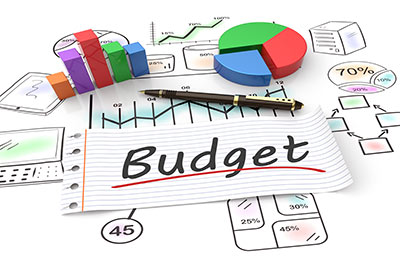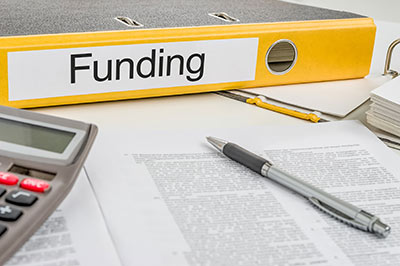Wen Wang, William D. Duncombe, and John M. Yinger, 2011. States are financing a larger share of capital investment by school districts but little is known about how districts respond to facility aid programs. Our paper addresses this gap in the literature by examining how a short-term increase in the matching rate for the Building Aid program in New York affected district capital investment decisions. We estimate a capital investment model and find that most districts are responsive to price incentives but that price responsiveness is related to the fiscal health and urban location of the district. Drawing on these results, we provide recommendations for the design of capital investment aid programs to increase their effectiveness in supporting high-need urban districts.
Tag: School Funding
NJ Legislature Must Act to Replenish School Construction Fund
Sharon Krengel, December 22, 2014. In testimony before the Joint Committee on the Public Schools, Education Law Center Executive Director David Sciarra called on the State Legislature to prepare for authorizing an increase in funding for New Jersey’s school construction program. “It’s now clear that the funds for school construction projects in urban districts are nearly exhausted and there are no funds left for projects in the rest of the state," Mr. Sciarra said. "State lawmakers must start work now on legislation to replenish the school construction fund to support urgently needed projects across the Garden State."
Minnesota School Finance: A Guide for Legislators
Research Department, Minnesota House of Representatives, 2014. The Minnesota school finance system is the method by which funds are provided to operate public elementary and secondary schools. The bulk of state support for elementary and secondary education is distributed to school districts through the general education revenue program, which provides money for the current operating expenditures of the districts. The remaining portion of the state’s appropriation to local districts is provided through special purpose or categorical aids, such as special education aid and local property tax relief aids. The purpose of this guide is to describe the various state programs that provide financial aid to Minnesota school districts. It includes finance data as well as some historical background. Historical, legal, and descriptive information in the following pages provide the context for understanding the school finance system.
School Construction Assistance Program Summary Handbook
Office of Superintendent of Public Instruction, 2009. The full School Facilities manual (the Manual) outlines the process for planning, design, construction, maintenance, and operation of school facilities and provides detailed information about the state School Construction Assistance Program. It serves as a guide to the services offered by OSPI, and to the procedures required for obtaining state assistance in planning, design, and construction of school facilities. This Summary Handbook is a shorter, high-level companion document to the School Facilities Manual to help navigate the SCAP process. The handbook provides an overview of the school construction process and references specific Manual chapters. All forms identified here and in the Manual are available on the OSPI School Facilities website.
Funding Resources for School District Facilities in Washington State
Office of the Superintendent of Public Instruction. This resource provides information for school funding in the State of Washington.
Recommended Policies for Public School Facilities
BEST Collaborative, 2005. It is the responsibility of each state to ensure that every child has access to a quality education. In many states, the courts have determined that school facilities that provide educational settings suited to the state’s determined curriculum are a significant part of this responsibility. However, school facility management and construction have traditionally been entirely the responsibility of the school district. Many states, particularly those who have increased their funding to local school districts are putting in place policies, procedures and technical assistance to ensure that their public school facilities are educationally adequate. The purpose of this paper is to provide policy guidance and recommendations to elected and appointed officials and administrators at the State, local, and school district level to improve facilities funding in order to support and enhance the delivery of educational programs and services for students and teachers.
A 50 State Survey of School Finance Policies (2011)
Deborah A. Verstegen, 2014. This compendium provides state-by-state descriptions of public elementary and secondary finance policies and programs in effect during the 2010-11 school year. The report consists of two volumes. In Volume I are state-by-state descriptions across all school finance components for each state. Volume II contains separate sections for select provisions across all states, including finance formulae and cost differentials for students and districts.
Evolving Ed-Tech Procurement in School Districts
Digital Promise & IDEO, 2013. The IDEO team interviewed 34 individuals, explored existing education resources, and sought inspirational best practices to understand the barriers and potential solutions in the ed-tech space. Twenty-five district leaders, ed-tech entrepreneurs, nonprofit leaders, and education experts gathered in San Francisco on March 28-29 for a workshop. The workshop focused on prioritizing the key barriers, brainstorming solutions, and developing concepts to test and iterate at the district level.
Procedures Manual Public School Building Capital Fund
The State Board of Education, North Carolina, Updated 2014. The purpose of this manual is to provide a comprehensive set of guidelines and regulations pertaining to the Public School Building Capital Fund to assist counties and school units in the application for funds for public school capital outlay projects as defined in G.S. 115C‐546.2(b), in the draw down of these funds, and in the reporting of the use of these funds.
Revenues and Expenditures for Public Elementary and Secondary Education: School Year 2010-2011 (Fiscal Year 2011)
(NCES, 2013).











